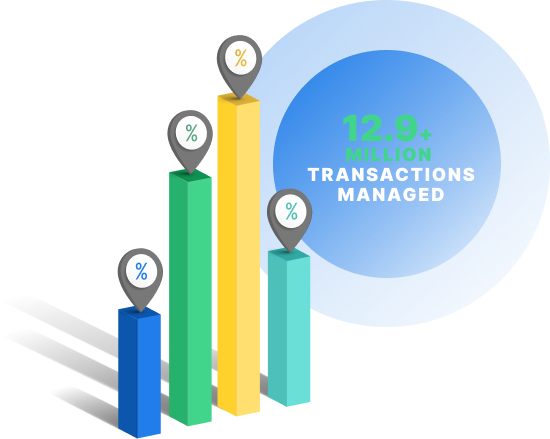A market development strategy is a business plan to boost sales of an already-available service or product in a new market. This strategy entails finding untapped geographic or consumer categories andcreating a marketing planto target them.
When we first opened our doors as WebpageFX in 1997, we did nothing more than provideweb development services. Over the years, we have expanded and broken into new markets andonline marketing niches, from digital tosocial mediatosearch engine marketing.
Along the way, we have tried and tested various market development strategies, enabling us to discover new consumer niches and broaden our reach. Today we will share tips for creating a market development strategy to benefit your company.
Here are eight steps to get you to start building your strategy:
- Set specific goals and objectives for the strategy
- Conduct market research
- Define the target market and understand their needs and preferences
- Develop a unique value proposition
- Identify potential distribution channels
- Develop a pricing strategy
- Create promotional materials and campaigns
- Monitor and measure the strategy’s effectiveness
Let’s take a closer look!
Meet WebFX:
Your world-class, tech-enabled marketing agency with over1.6 millionhours of combined expertise.

What is a market development strategy?
A market development strategy is a growth tactic that broadens a company’s customer base by breaking into new markets or selling everyday items in those regions. It boosts income and market share by finding and exploring new prospects outside the business’s present clientele.
How to Create a Market Development Strategy
Developing a market expansion strategy takes extensive research, planning, and execution. Let’s look more closely at the eight phases for creating an effective market development strategy.
Step 1: Set specific goals and objectives for your strategy
Building a market development strategy begins with definingspecific, measurable, attainable, relevant, and timely (SMART) goalsand objectives. Are you looking to:
- Increase market share?
- Launch a new product?
- Expand into a new geographic region?
You can ensure your strategy aligns with your overarching company objectives and monitor progress toward attaining them by creating precise, quantifiable targets.
For instance, you can target 500 new clients in the upcoming quarter or boost revenue by 20% over the following six months. These goals should reflect in your objectives and include additional information about how to accomplish them. These objectives involveraising brand exposure,increasing website traffic, orenhancing client retention rates.
You’ll have a guide to follow and an accurate way to gauge your progress if you establish specific goals and objectives. This approach will keep you motivated and engaged while ensuring you are moving forward meaningfully toward your goals. Defining targets and objectives can also aid in allocating limited resources and selecting productive activities.
Step 2: Conduct market research
Next, you mustconduct market research抓住你的消费者、竞争对手和行业trends. This approach will help you identify market gaps, growth opportunities, and associated risks to your company.
例如,一个小企业主克洛thing boutique can use market research to find out what designs and styles are popular with their target market, examine pricing plans used by rival businesses, and gather data on current fashion industry trends to make sound decisions about their product offerings and advertising strategies. With this data, this boutique cancreate unique selling propositions (USPs)that set them apart from rivals and discover new client niches to target.
You can better address the requirements and desires of your customers by collecting data on their demographics, habits, and preferences. You can also differentiate yourself from the competition by using their shortcomings toimprove your marketing and sales efforts.
Step 3: Define your target market and address their pain points
Once you’ve collected data on your customers and competitors, use it todefine your target market和理解他们的痛点和需求。Who exactly are your ideal clients? What are their concerns and thedriving forces behind their purchasing decisions?
By addressing these concerns, you candevelop customized marketing campaignsthat resonate with your audience and improve your chances of turning them into devoted clients. You’ll have to constantly reevaluate and modify your methods in light of the possibility that yourtarget marketmay shift over time.
Step 4: Develop a unique value proposition
The next stage is to create a distinctive value proposition that distinguishes you from your rivals once you have a firm grasp of your target market. Your value proposition should effectively convey the significant advantages of your item or service. This tactic could comprise:
- Highlighting your product’s unique features
- Emphasizing your exceptional customer service
- Positioning your brand as the best solution to a specific problem
Creating a compelling value proposition lets you draw in and keep clients seeking your product or service’s advantages. Also, a well-crafted value proposition may set your company apart in a crowded industry.
It can act as the cornerstone for all yourmarketing initiatives, fromwebsite contenttoadvertising campaigns, and aid in developing a devoted clientele.
Step 5: Identify potential distribution channels
After a firm grasp of your target market and their requirements, you must determine efficientdistribution channelsto reach them. This might include:
- Social media
- Email marketing
- Direct mail
- Partnerships with other businesses
You can optimize your reach and improve your chances of turning indifferent potential customers into devoted ones by using the appropriate channels and customizing your messaging to your audience. Also, it’s critical to continuously assess and modify your distribution strategy based on the performance of each channel.
For instance, it could be worth allocating more resources to social media if you discover it generates the most traffic and conversions. Conversely, if youremail marketing initiativesneed to develop the expected results, it could be time to reexamine your messaging or target market.
Keeping up with emerging distribution channels can also help you stay one step ahead of the competition and develop inventive ways to connect with your target market.
Step 6: Develop a pricing strategy
Price has the power to make or break a company, so finding the ideal balance between profit margins and consumer value perception is crucial. An overly aggressive pricing plan might turn away prospective clients, while a too-conservative strategy can result in narrow profit margins.
While creating your pricing plan, consider your costs, other businesses, and your target market. Continually evaluating and modifying your rates will guarantee they stay competitive and profitable. Try a few alternative options — value-based or subscription pricing — to determine whichpricing strategyworks best for your company.
Step 7: Create promotional materials and campaigns
After you’ve decided on your pricing strategy and plan,develop marketing materialsthat communicate your value proposition to your target market. This step entails designing marketing materials that are aesthetically appealing and engaging, as well as developing messaging that emphasizes the unique advantages and qualities of your goods or services.
You can use your chosen distribution channels to reach your audiences and consider partnering with influencers or other businesses to amplify your message. You can increase brand awareness and attract new customers by effectively communicating your value proposition.
Remember totrack the effectiveness of your promotional effortsand adjust as needed to ensure that you effectively communicate your value proposition and reach your target market.
Step 8: Monitor and measure the strategy’s effectiveness
Finally, keep an eye on essential indicators likewebsite traffic,social media engagement, andconversion ratesto gather insightful knowledge about what is effective and what needs improvement. Also, asking clients for feedback can reveal important details about how they view your brand and how effectively your messaging connects with them.
You can then use these insights to make data-driven marketing decisions and modifications, ensuring that you are constantly improving and fulfilling the demands of your target market. Frequently analyzing and adjusting your strategy is critical to remain competitive in a continuously changing environment.
Time to Level Up Your Sales
Our long list of services helps you grow every aspect of your business with marketing strategies that are proven to increase bottom-line metrics like revenue and conversions.
In the past 5 years, we’ve managed more than12.9 MILLIONtransactions across our client base.

Get a custom market development strategy from WebFX
WebFX is adigital marketing agencyspecializing in custom market development strategies for companies of all sizes. We have over 1.6 million hours of experience and are a trustworthy partner for businesses looking for development and success in the digital realm.
To create a unique strategy to meet your company objectives, our specialists conduct an industry analysis, assess your target market, and research your rivals. We’ll usecutting-edge technologyto boost brand awareness, attract more visitors to your website, or produce more leads and sales.
Contact us onlineor call888-601-5359to speak with a strategist about how we can help your business thrive in the digital landscape.
Table of Contents
- What is a Market Development Strategy?
- How to Create a Market Development Strategy
- Step 1: Set Specific Goals and Objectives for Your Strategy
- Step 2: Conduct Market Research
- Step 3: Define Your Target Market and Address Their Pain Points
- Step 4: Develop a Unique Value Proposition
- Step 5: Identify Potential Distribution Channels
- Step 6: Develop a Pricing Strategy
- Step 7: Create Promotional Materials and Campaigns
- Step 8: Monitor and Measure the Strategy’s Effectiveness
- Get a Custom Market Development Strategy from WebFX
How is your website’s SEO?
Use our free tool to get your score calculated in under 60 seconds.
Continue Reading
Get posts by email
Join 200,000 marketing managers and subscribe to Revenue Weekly!
"*" indicates required fields
WebFX Careers
Join our mission to provide industry-leading digital marketing services to businesses around the globe - all while building your personal knowledge and growing as an individual.








